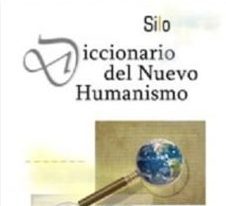Nonviolence
What do we mean by non-violence?

“Non-violence usually encompasses either the particular system of moral concepts denying violence, or the mass movement led by Mahatma Gandhi which developed in India in the early part of the 20th century, as well as the struggle for black civil rights in the USA under the leadership of M. L. King and the activity of Kwame Nkrumah in Ghana. The civil interventions of A. Solzhenitsin, A. Sakharov, S. Kovalev and other famous dissidents against Soviet totalitarianism can also be mentioned.
The idea of non-violence is expounded in the Bible and in the writings of other religions, in the appeal “do not kill”. This idea was developed by many thinkers and philosophers; the Russian writers Leo Tolstoy and Fyodor Dostoevsky formulated it in great depth. Tolstoy’s formula promulgating the supremacy of love and the “non-use of violence in the face of evil”, in other words the impossibility of fighting one evil with another, gained worldwide resonance, spawning a unique sect of “Tolstoyists”.
Mahatma Gandhi (1869-1948) formulated the ethics of non-violence in his own way, based on the principle of ahimsa (refusal to exercise any form of violence against the individual, nature, insect or plant) and the “law of suffering”. Gandhi succeeded in organising the satiasgraja, a non-violent anti-colonial movement, uniting many millions of people. This manifested itself in massive and prolonged civil insubordination to the British authorities, refusing to collaborate with them, defending their originality and freedom, but without resorting to violent methods. The people called Gandhi “Mahatma” (great soul) for his courage and uncompromising action on the principle of Non-Violence. The Non-Violence movement paved the way for Britain to relinquish its supremacy in India, although Gandhi himself was assassinated by a hitman. Unfortunately, the principle of ahimsa was later forgotten. The political development of India and Pakistan was tinged with bloody tones of the most outspoken violence.
M.L. King’s struggle also ended without success, he too was assassinated while speaking at a mass rally.
Nevertheless, the concept of Non-Violence, including non-violent forms of protest, is still alive and unfolding in the world. Daily and massive interventions of the lower strata of workers, protest rallies and demonstrations, strikes, women’s and student movements, peasant demonstrations, leafleting, leaflets and newspapers, radio and TV interventions, all these constitute the forms of the ethics and practice of non-violence.
New Humanism strives to minimise violence to the extreme limit, to overcome it completely in perspective and to put all methods and forms of resolving oppositions and conflicts on the rails of creative non-violence.
Nonviolence has often been equated with pacifism, when in reality the latter is neither a method of action nor a way of life, but a constant denunciation of armament.
Active Nonviolence is a strategy of struggle of New Humanism consisting of the systematic denunciation of all forms of violence exercised by the System. It is also a tactic of struggle applied to specific situations in which any kind of discrimination is verified”.
From the Dictionary of New Humanism. Silo
